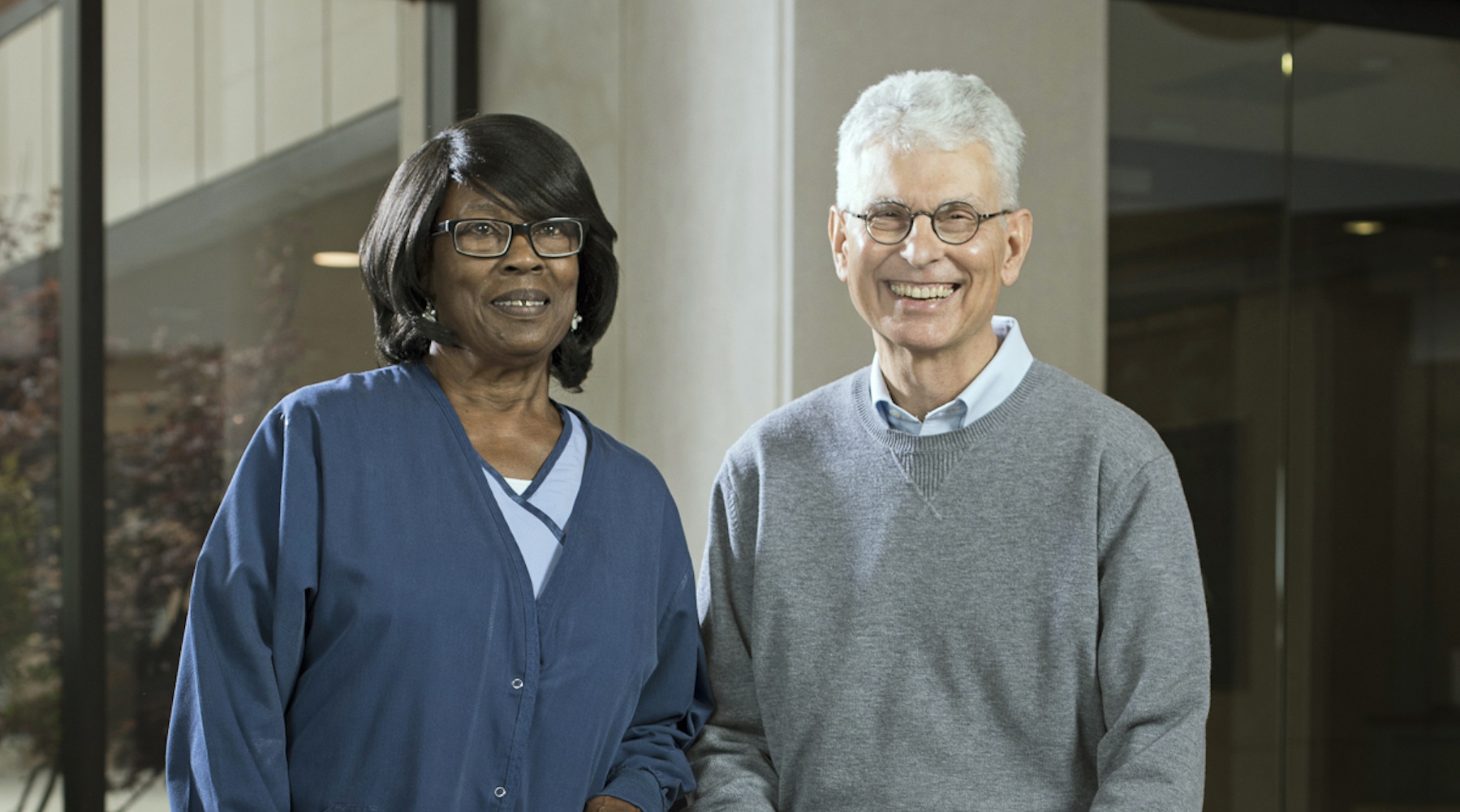When Mary Long became pregnant with her first child in 1970, her feet felt as if they were being stuck with needles. Her hands throbbed. Eventually, the pain forced her to stop working. Blood tests revealed her pain stemmed from a form of sickle cell disease.
She really can’t remember a time when she wasn’t in pain, even from childhood. But the answer to her pain may, literally, be right around the corner.
Long has worked at the Oklahoma Medical Research Foundation for more than 30 years alongside researchers who’ve made new discoveries in the disease that has impacted every day of her life.
In SCD, red blood cells change from their customary round or oval shapes to the form of a crescent or “sickle.” Unlike normal cells, which are pliable and slide easily through the blood vessels, sickled cells become hard and sticky. They stack up inside vessels, which eventually results in inflammation and excruciating pain. In some cases, long-term lack of oxygen can lead to organ damage, stroke or even death.
June 19 is World Sickle Cell Awareness Day, bringing attention to a disease that affects millions globally. The disease can affect people of all races, but it’s most prevalent in those with African-American heritage, like Long. Health authorities estimate that 100,000 people in the U.S. suffer from SCD, which has no known cure.
Since the 1980s, Long has been a member of the staff that cleans the foundation’s offices and labs, ensuring that researchers at OMRF can focus their time and attention on developing a deeper understanding of human biology. One of those researchers is Rodger McEver, M.D., who started his lab at OMRF a few years after Long came aboard.
McEver trained as a hematologist, a physician who specializes in blood disorders, and focused his research on white blood cells. Specifically, he studied P-selectin, a protein that mobilizes white blood cells to hunt down and stop invaders like bacteria in the body. McEver and his colleagues created an antibody that blocks P-selectin’s functions. Research indicated that, in laboratory mice, P-selectin worsened sickle cell disease symptoms.
To explore clinical applications in humans, McEver helped create a biotechnology company, Selexys. The company fine-tuned the antibody, making an experimental drug that bound to human P-selectin and blocked its function.
An initial round of clinical testing found the drug to be safe and well tolerated by patients. Then, in a larger, multi-center trial in the U.S., Jamaica and Brazil, the medication showed a marked reduction in pain crises suffered by SCD patients.
Based on those results, the pharmaceutical company Novartis purchased Selexys and its experimental drug in late 2016. McEver hopes the medication, now known as SEG101, will soon be approved for treatment of sickle cell disease.
“As a physician, I’ve seen these patients,” McEver said. “Their suffering is extreme. SEG101 is still not the ultimate cure, but I hope it will help a lot of people until we can do more.”
Long hopes McEver’s drug will be a success and that news of it might also encourage some who’ve lived with SCD to seek assistance.
“If you don’t talk about it, you might never know who could help you,” she said. “Dr. McEver has used his knowledge, and it might make life better for many who suffer with sickle cell disease. I really hope it happens.”



